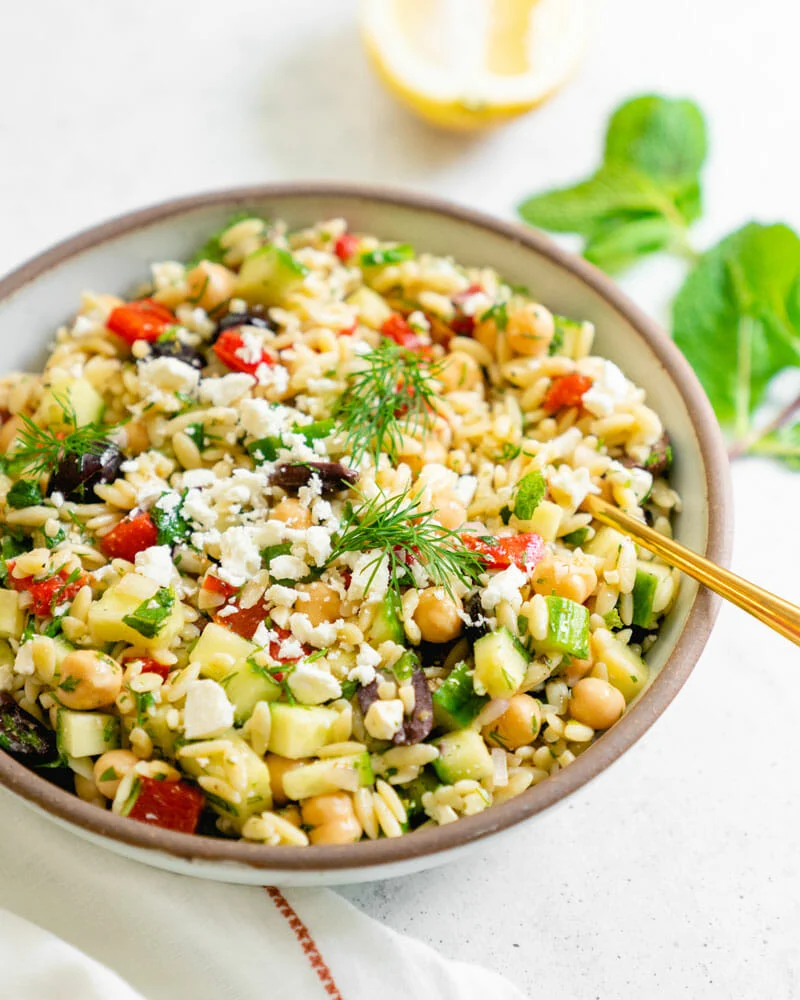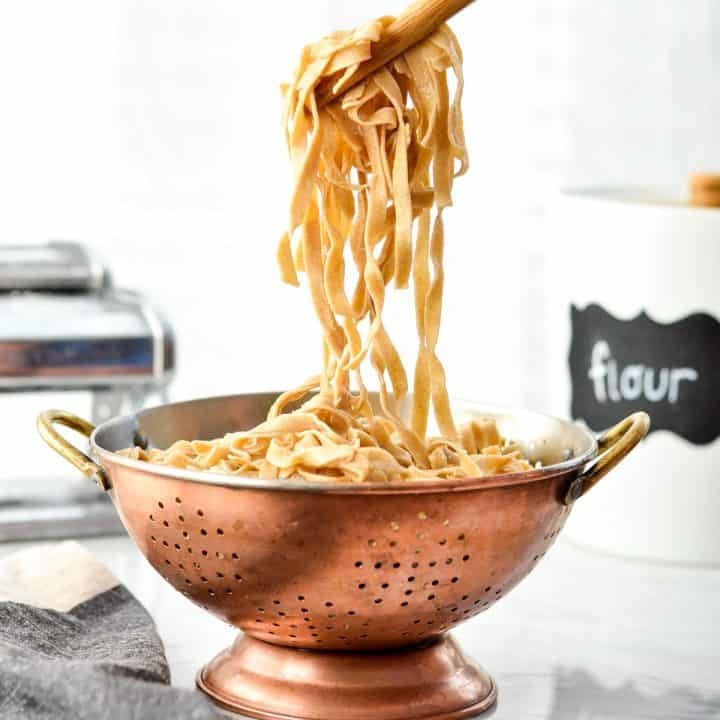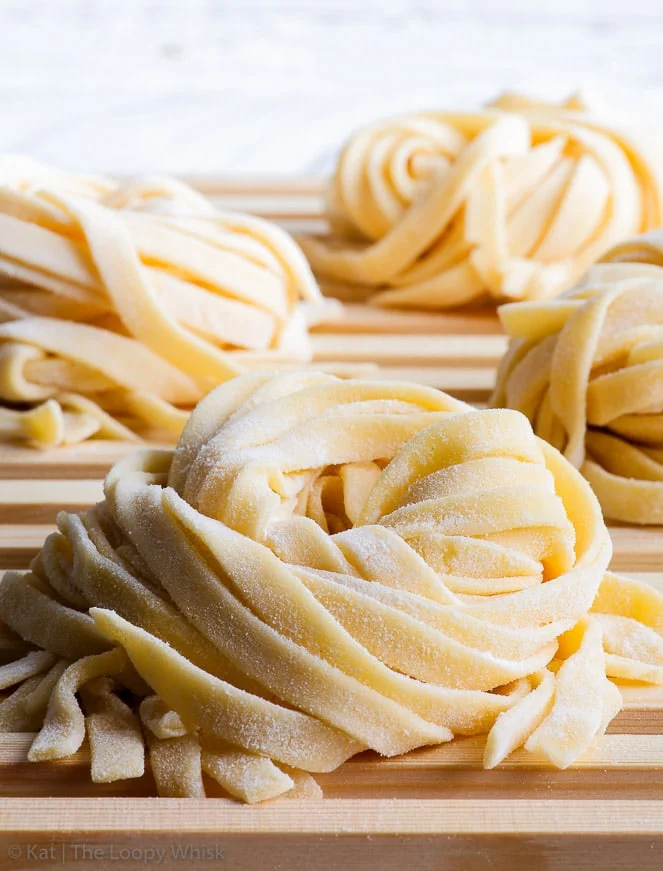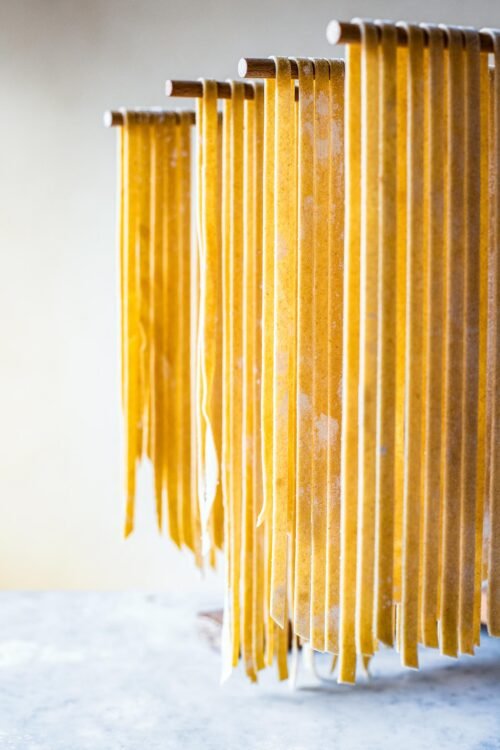If you’re looking for a way to enjoy delicious pasta dishes while still staying healthy, then the Mediterranean diet is the perfect fit.
This diet focuses on eating fresh, wholesome foods that are full of flavor and nutrition.
One of the staples in this diet is pasta, which can be enjoyed with various sauces and toppings.
However, not all types of pasta are created equal when it comes to following the Mediterranean Diet.
Some pastas contain more carbs or fat than others and may not be as nutritious as they could be.
In this article, I will share five kinds of pasta that are ideal for those following a Mediterranean Diet.
From whole-wheat spaghetti to gluten-free options, these pastas will provide you with plenty of flavor without sacrificing your health goals!
What is The Mediterranean Diet?

The Mediterranean Diet is a way of eating that has been practiced for centuries in the countries bordering the Mediterranean Sea.
It is based on traditional foods and recipes from these regions, including Greece, Italy, Spain, Morocco, Lebanon and other parts of the Middle East.
The diet emphasizes fresh fruits and vegetables; whole grains such as breads and pastas; legumes like beans and lentils; nuts; olive oil as a primary source of fat; fish or seafood at least twice per week; moderate amounts of dairy products (mostly cheese); small amounts of red meat (no more than once per week); eggs in moderation (up to four times per week); herbs and spices for flavor instead of salt; wine with meals in moderation (for adults only).
The Mediterranean Diet also encourages an active lifestyle with regular physical activity.
This includes walking or biking to work or school if possible, taking stairs instead of elevators when available, gardening or doing yard work regularly, playing sports with friends or family members outdoors whenever possible.
Additionally, it promotes social interaction by encouraging people to eat together as often as possible—sharing meals with family members or friends can be beneficial both physically and mentally.
The 5 Best Kinds of Pasta for the Mediterranean Diet
The Mediterranean diet is all about eating a variety of fresh, healthy foods.
Pasta is one of the staples of this diet and it’s important to choose the right kind for optimal nutrition.
Here are five types of pasta that will fit perfectly into your Mediterranean menu:
1. Whole Wheat Pasta

Whole wheat pasta is a great option for those following the Mediterranean diet.
It is made with whole wheat flour, which contains all three parts of the grain—the bran, germ, and endosperm.
This means that it has more fiber than regular white pasta and provides more vitamins and minerals.
Whole wheat pasta also has a nuttier flavor than regular white pasta, making it an ideal choice for many dishes.
Whole wheat pasta can be used in any recipe that calls for traditional white or durum semolina pastas such as spaghetti, penne, fettuccine, macaroni, lasagna noodles and more.
It’s perfect for hearty soups and stews or tossed with vegetables in a light sauce.
You can even use it to make homemade ravioli or stuffed shells!
For added flavor try adding fresh herbs like parsley or basil to your dish before serving.
2. Veggie-Based Pasta

Veggie-based pasta is a type of pasta made with vegetables instead of wheat flour.
It’s a great way to get more vegetables into your diet, and it can be used in the same way as regular pasta.
The most common types are made from zucchini, squash, carrots, spinach, and sweet potatoes; however, there are many other varieties available on the market.
Veggie-based pastas are usually gluten-free and have fewer calories than traditional wheat-based pastas.
When following the Mediterranean diet—which emphasizes eating lots of fruits and vegetables—veggie-based pasta is an excellent choice for getting some extra nutrition into your meals.
You can use veggie-based pasta just like you would any other kind of pasta: boiled in water or broth until al dente then tossed with olive oil or butter and herbs for a simple side dish; added to soups or stews; baked in casseroles; or served cold in salads.
3. Legume-Based Pasta
Legume-based pasta is a type of pasta made from legumes such as lentils, chickpeas, and beans.
It is an excellent source of plant-based protein and fiber and has a lower glycemic index than traditional wheat-based pastas.
Legume-based pastas are also gluten-free, making them suitable for those with celiac disease or gluten sensitivities.
If you’re following the Mediterranean diet, legume-based pasta can be a great addition to your meals. It’s easy to incorporate into dishes like salads, soups, casseroles, stir-fries, and more.
You can even use it in place of regular pasta in recipes like macaroni and cheese or lasagna.
For added flavor and texture try adding vegetables like mushrooms or zucchini to your dish when cooking with legume-based pasta.
4. Gluten-Free Pasta

Gluten-free pasta is a type of pasta made without wheat, barley, or rye.
It can be made from a variety of grains and starches such as rice, corn, quinoa, and chickpea flour.
Gluten-free pasta is an excellent option for those following the Mediterranean diet since it does not contain any gluten.
Gluten-free pasta can be used in many of the same ways that regular wheat-based pastas are used; it can be boiled and served with sauces or added to soups and stews.
It also works well in cold dishes like salads or as part of a casserole dish.
The texture may differ slightly from traditional wheat-based pastas but with some experimentation you’ll find the right cooking time to get the desired results.
If you’re looking for something different than your usual spaghetti dinner, try making gluten-free lasagna using layers of gluten-free noodles instead of traditional lasagna noodles.
You could also make a delicious macaroni salad by combining cooked gluten-free elbow macaroni with vegetables and dressing for a light summer meal.
5. Kamut Pasta

Kamut pasta is a type of whole grain pasta made from the ancient grain khorasan wheat, also known as Kamut.
It has a nutty flavor and chewy texture that makes it an excellent alternative to traditional white or wheat pastas.
It is high in protein, fiber, and minerals such as zinc and magnesium; it also contains more lipids than other grains.
Kamut pasta can be used in any recipe that calls for regular pasta—it’s great for making salads, soups, casseroles, and even macaroni and cheese.
The nutty flavor pairs well with Mediterranean flavors like olives, tomatoes, garlic, capers, feta cheese, oregano and basil.
You can also use it to make pesto or add some crunch to your favorite stir-fry dish by adding cooked Kamut pasta at the end of cooking time.
Conclusion
In conclusion, the Mediterranean diet is one of the most popular and healthiest diets around.
It focuses on fresh, whole foods and emphasizes fruits, vegetables, nuts, and legumes.
When it comes to pasta, there are several types that are great for the Mediterranean diet.
The best kinds of pasta for the Mediterranean diet are whole wheat pasta, veggie-based pasta, legume-based pasta, gluten-free pasta, and kamut pasta. Each of these types of pasta offer different nutritional benefits and will help you stay on track with your diet.
By including these types of pasta in your meals, you can enjoy delicious dishes while still reaping the health benefits of the Mediterranean diet.

The 5 Best Kinds of Pasta for the Mediterranean Diet
Ingredients
- Whole Wheat Pasta
- Veggie-Based Pasta
- Legume-Based Pasta
- Gluten-Free Pasta
- Kamut Pasta
Instructions
- Pick your favorite kind of pasta from this list.
- Prepare the rest of your delicious meal, and enjoy in no time.
Jenny has always been passionate about cooking, and she uses her platform to share her joy of food with others. Her recipes are easy to follow, and she loves giving tips and tricks to help others create their own unique culinary creations.

